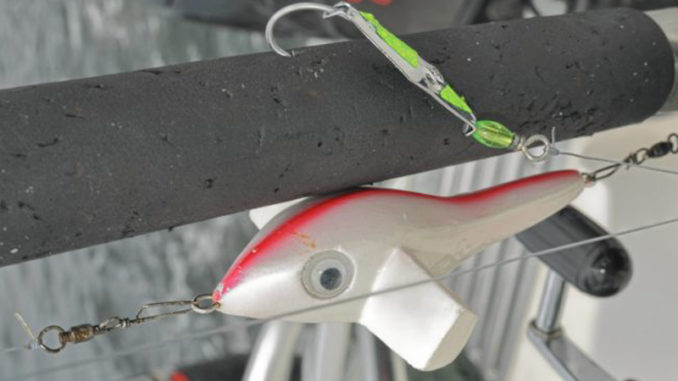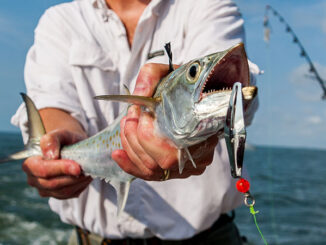
Hard-plastic teasers can produce more Spanish mackerel
Since May, many fishermen have been targeting Spanish mackerel, particularly off the beaches from Oak Island to South Carolina’s Grand Strand. And the good fishing will last into September. If you want to get in on the action – and have a better chance of success – try “teasing” fish with a “bird.”
That’s one trick that Kevin Sneed of Rigged & Ready Charters uses to put more fish in his clients’ coolers. And it’s a simple one.
Birds are hard-plastic lures that resemble flying fish, shaped like a tiny bowling pin with angled “wings” protruding from both sides of the body, About five inches long, they skip across the water’s surface when trolled at 7 mph or faster – standard trolling speeds for Spanish mackerel.
“I think the commotion on the surface is what gets the attention of Spanish,” said Sneed (910-448-3474). He uses them along with Nos. 0 and 00 Clark Spoons in trolling spreads. “For some reason, I catch bigger Spanish with birds than I do with spools that are trolled deeper.”
Red and white does the trick
Sneed likes a white bird with a red stripe down the back.
“I use 25-pound Momoi diamond monofilament on a Shimano Speedmaster reel mated to a Capt. Brant live-bait rod,” he said. “It’s basically a king-mackerel setup.”
Sneed uses blood knots to tie on a ball-bearing snap swivel to the end of his main line, and then snaps on the bird. He’ll then tie another snap swivel to the front of 15 to 30 feet of 20-pound-test Momoi leader. He snaps that to the back of the bird. He ties Clark spoons to the end of his leader line. The ball-bearing swivels prevent line twist.
If fish are finding his spoons but won’t bite, he changes his leader to 8 feet of 12- to 15-pound fluorocarbon.
Birds also may be used to pull “daisy-chains” teasers – several plastic lures in an umbrella rig arrangement also called a “dredge”. The big surface commotion caused by a dredge also attracts Spanish.




